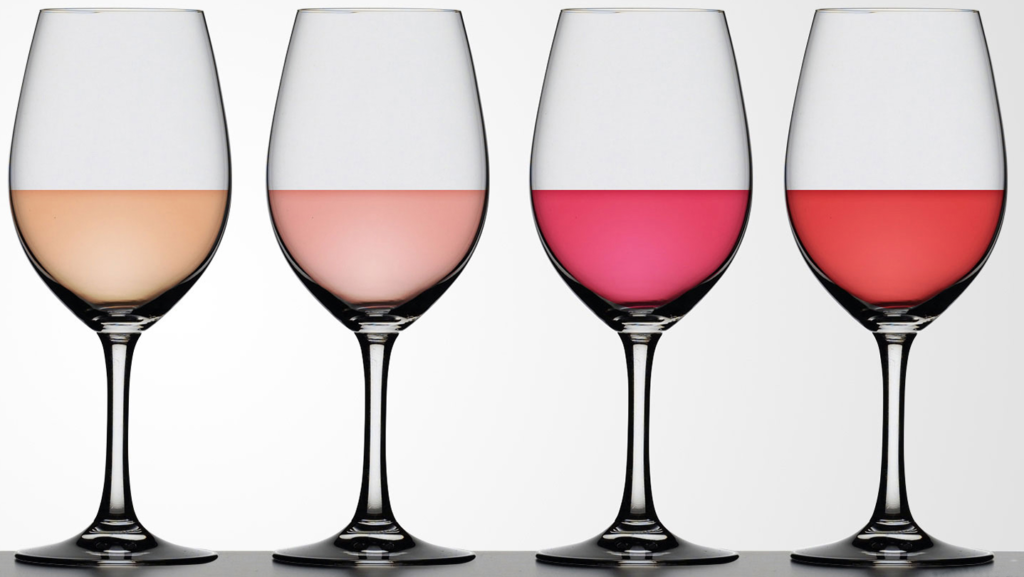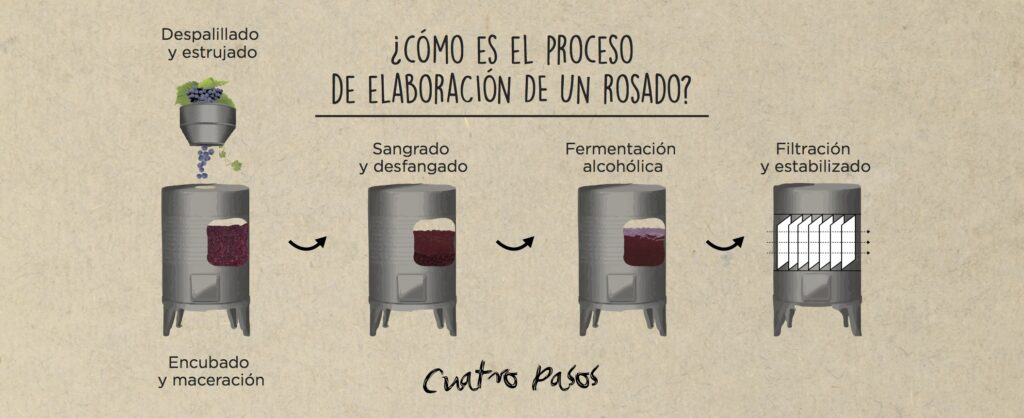do you want to know how to make rosé wine? There is a drink that has begun to become the favorite of many people in recent years, its boom is due to its ease at the time of accompanying any meal and its delicacy.
That usually envelops the palate, and that delight that has managed to capture the attention of young and old is nothing more and nothing less than rosé wine. But do we know how rosé wine is made? Just like red wine and white wine, rosé wine has a methodology that allows obtaining a wine that goes from light pink to dark pink, which is not at all simple and has even been a challenge for some large wineries.
Understanding how rosé wine is made will take us deeper into a passion that melts thousands of people who have been seduced by its freshness and fascinating flavor and will undoubtedly expand our knowledge on a subject that has thousands of links.
En esta nota, encontraras lo siguiente
How Rosé Wine is made
Rosé wine is a very particular beverage, its charming color always attracts attention, and being able to admire a pink wine manages to give the eye a bit of grace. And although it has not been easy for it to become popular, thanks to its quality it has gradually managed to capture hearts.
To understand how rosé wine is made, we must begin by knowing that its color is extracted in the same way as red wine. That is, thanks to the fact that the grape juice comes into contact with the grape skins during the fermentation stage, but unlike red wine, the contact time is shorter, and this is what gives way to the pink that is so exciting.
The grape varieties used for its production include red and white, which allows to obtain such a pleasant color, however, its production method differs a little from red and white.
how is rosé wine made? (Step by step)
The elaboration of rosé wine is very similar to that of white wine, except for the maceration time and the use of two different methods, pressing and bleeding. 
Rosé wine through the pressing method
Rosé wine can be made through the pressing method, here the grapes selected at harvest. Which is the most optimal of all is transported to where the destemming process is carried out.
1.- Destemming
In destemming, the grapes are separated from the stalks or any other herbaceous part of the bunch that may be adhered to the grapes at the time of selection and that is not wanted to remain in contact with the vine.
2.- Crushing
As with white wine, once the destemming process is finished, the grapes are crushed to extract as much juice as possible without crushing solid elements such as skins, pips, among others, which can impart unpleasant flavors to our wine.
3.- Maceration
Once this phase is completed, we proceed to the maceration stage, which will determine the pink color of the wine, therefore, if we are looking to generate a very clear broth, it is not carried out or it is done in a very short period of time.
4.- Pressing
The time that passes that the must obtained with the skins extracted will give more color and darkness to our wine without becoming red and just at the end of the maceration we will proceed to the pressing. Here the person in charge should apply gentle pressure in order to extract the must quickly and without it suffering any type of alteration.
5.- Devatting and Fermentation
As with white wine, after pressing, the must must must be racked to eliminate pectins and completely clean the must for fermentation, which will be carried out at controlled temperatures and will generate a fresh rosé in which the fruit will prevail above all.
6.- Clarification
At the end of fermentation, the wine undergoes a clarification process in which organic substances are used to remove impurities from the wine. This process is carried out in barrels and, if necessary, filtered to obtain a better quality wine.
This is how rosé wine is made using the pressing method, so for many it is considered a process equal to that of red wine and rosé wine. However, as in each case, each winery keeps its own secrets that make the difference in the great diversity that exists in the market.
Posado wine prepared with the bleeding method
For many experts in the field, bleeding is the best method and the one that allows to obtain a perfect rosé wine, its dark and intense color is the result of a complex process but it is worth doing to get the final prize, a perfect wine.  The grape variety traditionally used with this technique is Garnacha, however, Merlot, Cabernet Sauvignon and Tempranillo are also used, although in smaller quantities. In general, wineries use more than one grape variety to obtain the desired wine.
The grape variety traditionally used with this technique is Garnacha, however, Merlot, Cabernet Sauvignon and Tempranillo are also used, although in smaller quantities. In general, wineries use more than one grape variety to obtain the desired wine.
Under this process the grapes go directly to the tank without going through the pressing phase. When the tank is full, the liquid part is extracted from the tank and only the whole red grapes are left.
During the maceration time, about 10% of the rosé juice is removed, the remaining red wine is intensified due to the reduction of the total volume and the must is concentrated, resulting in a much tastier broth. The bled rosé juice is fermented separately, which then produces a rosé wine of greater color intensity.
But how is rosé wine made by bleeding? well, the lower tap in the tank must be opened and the rosé must is allowed to flow by gravity for between 6 and 24 hours, separating the liquid from the rest of the grapes.
It is precisely this process that results in an intense rosé that will captivate those who seek to enjoy an exceptional wine. Its flavor and aroma tends to be much bolder, fresh and intense, which is why it is usually a method used by many wineries seeking to compete for the liking and preference of a public that seeks quality and knows the good stuff.




